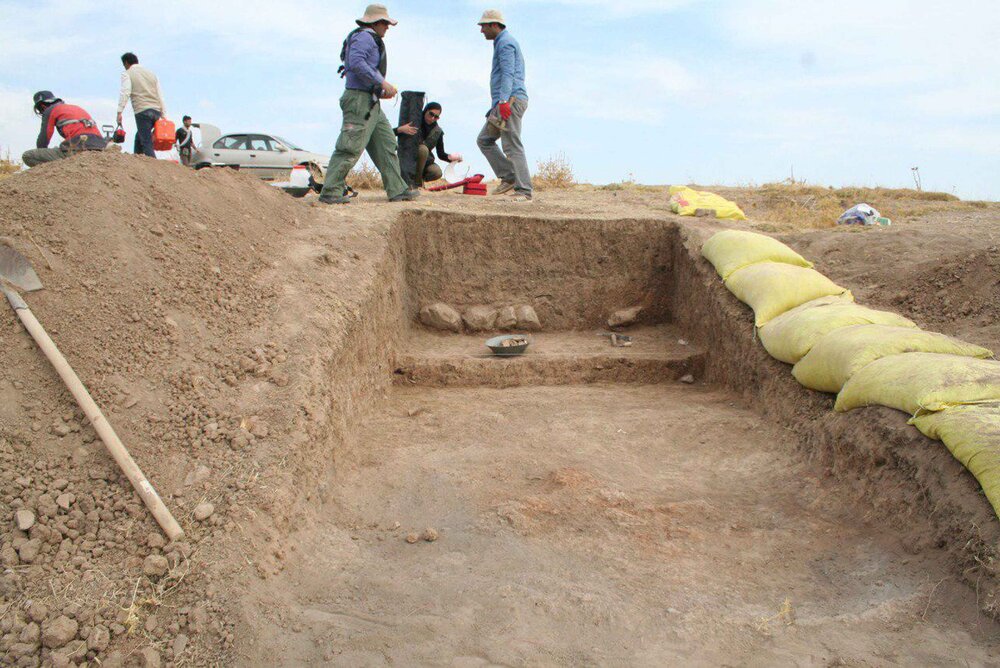A peek into Bronze-Age Tepe Gariran, a gateway to the “Old Routes of Western Iran”

TEHRAN – In 1931, the renowned British archaeologist Sir Marc Aurel Stein (1862 – 1943) surveyed Tepe Gariran in western Iran along with several others across the ancient land. His views were published in November 1969 in a book titled “Old Routes of Western Iran: Narratives of an Archaeological Journey”.
Situated within Alashtar county that is one of the prominent valley plains in central Zagros mountain range, the mount, however, after over 80 years in 2017, dragged the attention of new generations of archeologists to resume excavations at the site, which is mostly notable for being home to a Bronze-Age civilization.
Lorestan was inhabited by Iranian Indo-European peoples, including the Medes, in c. 1000 BC. Cimmerians and Scythians intermittently ruled the region from about 700 to 625 BC. Of ancient highlights of the region are the Luristan Bronzes that comprise small cast objects decorated with bronze sculptures from the Early Iron Age, found in large numbers in Lorestan and its neighboring Kermanshah province.
According to an essay discussed during an International Conference of the Society of Iranian Archaeology, excavations of Gariran, as a great Bronze Age site, which covers more than five hectares, revealed continuity from middle-late Chalcolithic to Iron Age.
The identification of settlement patterns can provide important information about regional and cross-regional communications in this area. Due to its exceptional position and the importance of its sites, this plain has been the subject of the growing attention of ancient geographers and geologists.
In the Parthian and Sassanid texts, there has been no reference to the city and plains of Alashtar, but the historians from the early centuries to the contemporary Islamic era have mentioned the name Alashtar in their books, referring to it with such titles as Lashtar.
From an archeological point of view, in 1936, Sir Aurel Stein entered Alashtar to study the settlement sites and the cemeteries introducing Lorestan bronze which were located across the Karkheh and Seymareh River: he then started examining Gariran and Betki Hills. (Stein, 1940: 280- 300).
Ernst Herzfeld was also among the researchers who investigated the bronzes in Lorestan and visited the relics and artifacts in Alashtar Plain (Herzfeld, 1941). In his studies from 1963 to 1967, Clare Goff visited some parts of Alashtar as well.
In general, 72 archaeological sites were identified in Alashtar plain which given the dispersion of the relics in the region (including pottery and surface material), 42 sites belonged to the Parthian period.
Alashtar is a fertile plain with a high potential for agriculture. Most of the Parthian sites in this plain were located inside these fertile agricultural lands which have played a key role in the development of settlements in different eras in this plain, especially during the Parthian period (compared to other eras), though most of these sites have been destroyed today as a result of agricultural activities.
Generally, there is a diversity of flora and fauna in the plain with the surrounding mountains covered with forest trees and wild plants. The fertility of this plain has stimulated the cultivation of crops and vegetation in the area to the extent that today a variety of crops and trees can be seen in the area thanks to the climatic and ecological features.
Walnut, apple, grape, willow, poplar, pear, elm, cherry, cranberry, and sycamore are abundant in the area. Apart from forest trees, some non-edible plants such as paqzan, salsify, artichokes, oregano, mint as well as a variety of medicinal and aromatic plants such as borage, daphnia, thyme, basil flowers, violet, damask rose, rose, anemone, musk willow, tulips, licorice, lily, hibiscus flowers, narcissus, and mountain tea grow in this area.
The basic conclusion that can be drawn here is that there has been no fundamental change in the environment and climate of Lorestan since the Iron Age to date.
AFM/MG
Leave a Comment